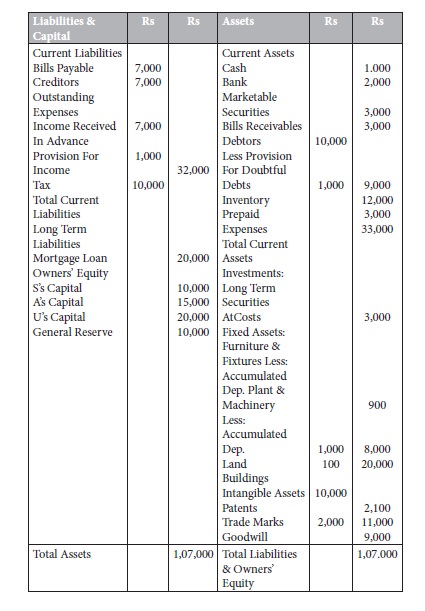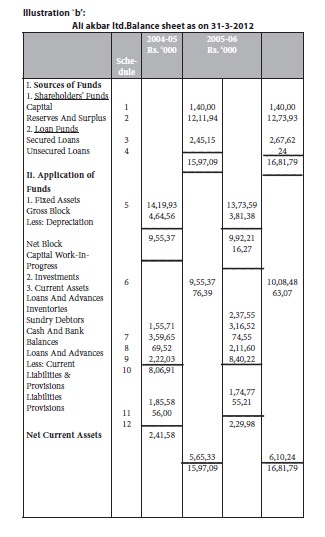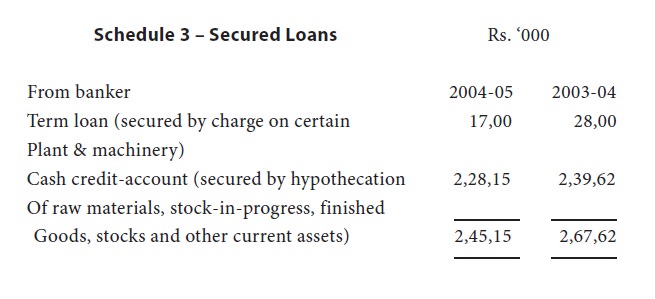Accounting For Managers - Preparation of Final Accounts
Balance Sheet, Form And Presentation Of A Balance Sheet
The balance sheet is basically a historical report showing the cumulative effect of past transactions. It is often described as a detailed expression of the following fundamental accounting equation:
Assets =
Liabilities + Owners’ Equity (Capital)
Assets are costs which represent expected future economic benefits to
the business enterprise. However, the rights to assets have been acquired by
the Enterprise as a result of past transactions.
Liabilities also result from past transactions. They represent obligations which require settlement in the future either by conveying assets or by performing services. Implicit in these concepts of the nature of assets and liabilities is the meaning of owners’ equity as the residual interest in the assets of the enterprise.
Form And Presentation Of A Balance Sheet
Two objectives are dominant in presenting information in a balance
sheet. One is clarity and readability; the other is disclosure of significant
facts within the framework of the basic assumptions of accounting. Balance
sheet classification, terminology and the general form of presentation should be
studied with these objectives in mind.
It is proposed to explain the various aspects of the balance sheet with
the help of the following typical summarized balance sheet of an imaginary
Partnership firm:
Illustration A:
Sundaram & Sons
Balance Sheet As At 31st December 2011

Conventions Of Preparing The Balance Sheet:
There are two conventions of preparing the balance sheet, the american
and the english. According to the american convention, assets are shown on the
left hand side and the liabilities and the owners’ equity on the right hand
side. Under the english convention just the opposite is followed i.e. Assets
are shown on the right hand side and the liabilities and owners’ equity are
shown on the left hand side. In the illustration `a’, the american convention
has been followed.
Forms Of Presenting The Balance Sheet:
There are two forms of presenting the balance sheet – account form and
report form. When the assets are listed on the left hand side and liabilities
and owners’ equity on the right hand side, we get the account form of balance
sheet. It is so called because it is similar to an account. An alternative
practice is the report form of balance sheet where the assets are listed at the
top of the page and the liabilities and owners’ equity are listed beneath them.
In illustration `a’ we have followed the account form of balance sheet.
Now-a-days joint stock companies present balance sheet in the form of a
statement in the annual reports. To illustrate, the balance sheet of ali akbar
ltd. Pondicherry as on 31-3-2012 is given below:
Ali
akbar ltd.Balance sheet as on 31-3-2012

Notes On
The Accounts:













